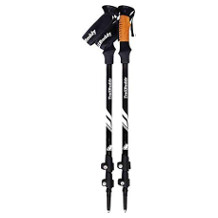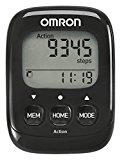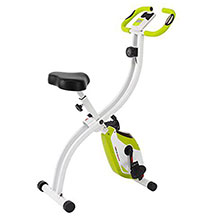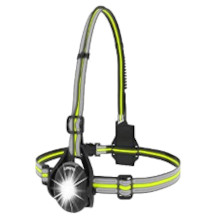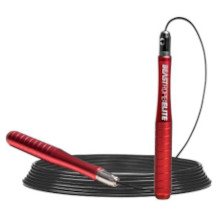Treadmill purchasing advice: how to choose the right product
- What you need to know
- Training on a treadmill not only improves stamina, but also strengthens the muscles and stimulates fat burning.
- Thanks to the cushioning properties, training on a treadmill is particularly easy on the joints.
- A distinction is made between manual treadmills, which are driven by pure muscle power, and electric models, which are powered by a motor.
- For smaller spaces, there are devices with a folding mechanism and wheels, as they can be easily stored away to save space.
- Pre-installed programs and an adjustable incline angle ensure a varied, individually adjustable workout.
Training on the treadmill
Whether it’s to burn calories, train for a competition or to relax: regular exercise is essential for physical fitness and health. As an essential part of life, running is one of the most natural forms of exercise, but a stressful everyday life and, above all, one’s weaker self stand in the way of the physical exercise. In addition to one’s own means of transport, the expansion of local transport also reduces the window of opportunity to get around and reach the often recommended 10,000 steps a day. What is more, it is difficult to motivate oneself to engage in outdoor activities in the colder seasons when the weather conditions become unfavorable. Darkness, rain, wind, and black ice are not only unpleasant, but also dangerous. However, adverse conditions are by no means a reason to give up training. For anyone who likes to run, a treadmill is the ideal fitness equipment. It allows users to exercise regularly without having to make extraordinary changes to their daily routine. Nowadays, treadmills are no longer only found in gyms, but have long since found their way into private living rooms.
Effective training all year round
Though the fresh air and time spent in nature speak in favor of running outdoors, users of a treadmill benefit from the numerous advantages of home training. Exercising at home is always possible regardless of the weather or time of day. Users can train at any time and don’t have to consider the opening hours of gyms. Since the training is particularly accessible, a short instruction is enough to start running. Another advantage: the injury risk is way smaller than outside, where there are various obstacles.
Getting fit without damaging your joints
Because treadmill training uses different muscle groups, it is suitable as a toning whole-body workout. It strengthens not only the foot, leg, and gluteal muscles, but also the shoulder and chest muscles, the back and even the abdominal and arm muscles. However, since running only builds muscle in the necessary area to provide the required performance, in principle anyone who wants a firm buttocks, a six-pack, or muscular upper arms must train these muscle groups separately. Many consumers also use the treadmill to lose weight. A 165-lb (75-kilogram) man consumes an average of 385 calories at a speed of 3.85 miles (6.2km) per minute and a training time of 30 minutes. In contrast to fitness improvement, fat burning is about exercising slower and longer in the medium pulse range. The exact calorie consumption depends on body weight as well as training intensity.
However, training on the treadmill is also ideal for improving endurance and strengthening the cardiovascular system. It activates blood circulation in the body and improves the efficiency of the heart, so that users no longer get out of breath so quickly. In addition, the upright posture prevents back pain and compensates for any imbalances. At the same time, the flat, slightly bouncy surface is easy on the joints. Furthermore, running has a stress-relieving effect.
With many models, it is possible to choose between pre-installed programs and different speed levels and settings. The fact that the conditions, including speed, incline angle, and training time can be adjusted means that performance can be controlled. Thanks to varied programs, runners no longer tread monotonously in place, but can immerse themselves in virtual training worlds. With the help of smartphones, tablets, and MP3 players, which provide exercisers with motivating songs or exciting audio books, running never gets boring. Depending on the location, it is even possible to watch films and series while running. But not all treadmills are the same: it is important to find out in advance which model meets your needs. The market has become so diverse that everyone interested can find the right device for their price and performance class.
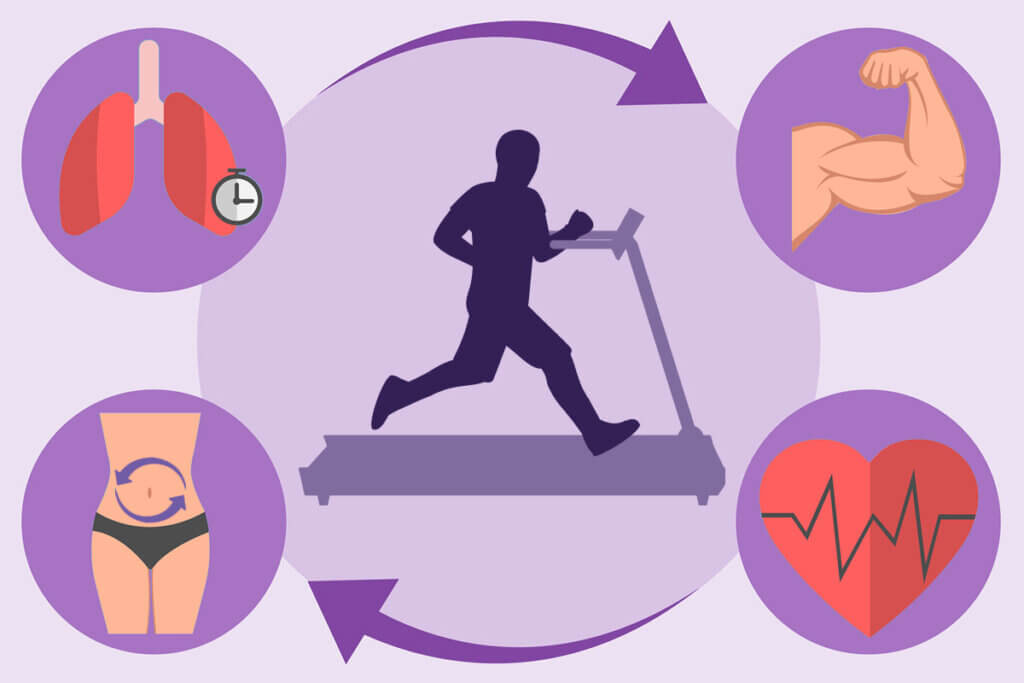
Stationary, foldable, and with desk
A treadmill is a piece of fitness equipment that allows you to run on the spot, or more precisely on a conveyor belt, for several kilometres. The exact mode of operation depends on whether the treadmill is driven by an electric motor or works mechanically. In addition to the classic design, there are also models that are specially designed for smaller spaces as well as for working in the office.
Manual vs electric
First of all, treadmills are roughly divided into manual and electric models according to their type of drive.
Manual treadmills
A manual treadmill has no motor, but moves only with the help of muscle power. This means that the running surface is only set in motion when users start running. In order to optimally transfer the force to the treadmill belt, users should lean slightly forward and hold on to the handrails. Speed and intensity are entirely dependent on the user moving the treadmill backwards with their feet. As soon as the runner stops, the belt stops instantly, which makes it particularly safe. Although a certain amount of force is required at the beginning to move the treadmill, less force is needed to maintain a constant motion. This means that a manual treadmill not only trains endurance, but also works the leg muscles. Due to the high effort required, longer distances and speeds of over 5 mph (8 km/h) are hardly achievable. Consequently, manual models are more recommended for fast walking or light jogging.
Because there is no motor, manual treadmills are not only cheaper to purchase (available for a price starting at $150). The lack of power consumption also means that energy costs are eliminated. In addition, users are not dependent on the presence of a power socket at the place of installation. Compared to electric models, however, they are rather sparse in terms of setting options, which makes a varied workout difficult. However, hobby athletes who only want to do a little exercise or strengthen their leg muscles are better off with the cheaper manual treadmills, as are senior citizens and patients undergoing rehabilitation.
Electric treadmills
With electric treadmills, a motor ensures that the running surface moves independently. Unlike manual treadmills, runners have to adapt to the set pace. Accordingly, less drive or muscle power is required. The electric drive makes the running very smooth. In addition, higher speeds of up to 14 mph (22 km/h) are possible. Users don’t even have to hold on to the handles, which makes them much more flexible and gives them a natural running feeling. If electric models are not equipped with the so-called emergency stop or a cord that runners clip to their clothing, they enter the belt with the risk of falling and injuring themselves. Theoretically, this risk also exists with manual treadmills, but there is a fundamental difference between the two types of treadmills. Unlike manual treadmills, which are driven only by body power and don’t transport the athlete off the treadmill in the event of a fall, electric models don’t rely on feedback from the runner. If there is no emergency stop or safety clip and the runner can no longer keep up or even falls, it has no effect on the treadmill’s performance and the athlete is swept off the treadmill.
The key advantage of electric treadmills is their far greater range of features, which make training more varied and effective. These features include speed, incline, and resistance adjustment as well as pre-installed training programs. Their better features make the electric models much more comfortable to use. In addition, the training progress can be tracked and recorded more accurately. However, these same features also make them much more expensive to purchase (available for a price starting at $200) as well as their follow-up costs. For them to work, the treadmills have to be connected to a power source. If you want to train in a performance-oriented way, you should opt for an electric model.
The special types
Treadmills also differ in terms of their construction or area of application. For example, there are particularly space-saving treadmills that fold away as well as models that are specially designed for use in the office.
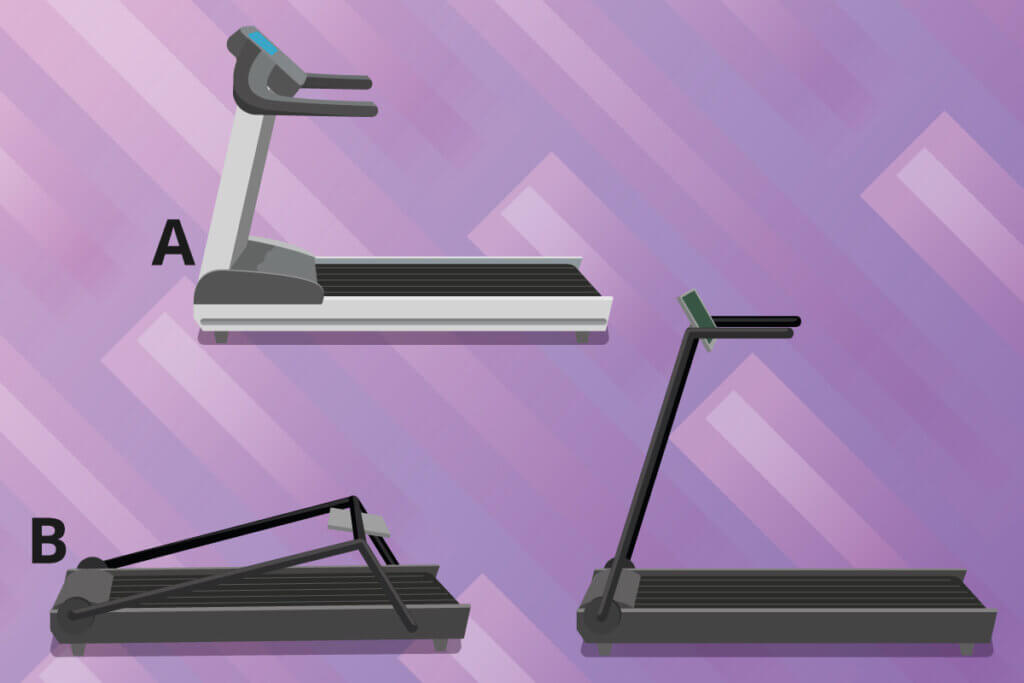
Stationary vs foldable
Compared to a cross-trainer or an exercise bike, a treadmill is relatively large. Without an additional room, it is therefore difficult to integrate the device into your home. If there is little space available, a foldable model is the ideal solution. This can be stowed away quickly and in a space-saving manner. In combination with transport wheels, a treadmill with a folding mechanism offers even more flexibility. Users can fold up the running surface via a lever and then roll the treadmill to the side. The folding mechanism usually reduces the footprint by at least half. The most important thing here is that the device can be folded in a few simple steps and can stand securely when folded.
Models with a particularly large running surface usually cannot be folded. Due to their size and weight, these models would not have a secure stand when folded. Those who prefer a larger running surface must therefore do without a folding mechanism. Stationary equipment also has the advantage of being fundamentally more stable and better able to withstand high loads.
Treadmill desks: the combination of work and sport
Sitting for long periods of time, especially in the wrong positions, is unhealthy. Walking while working at the computer has a positive effect not only on health but also on mental performance. So if you use a treadmill while working, you boost your creativity and productivity. This is exactly what the market has picked up on and developed treadmills that do without an upper part, grips, and display. Instead of a display, runners have a table on which they can place computers, documents, and coffee mugs. Basically, a distinction is made here between two different models:
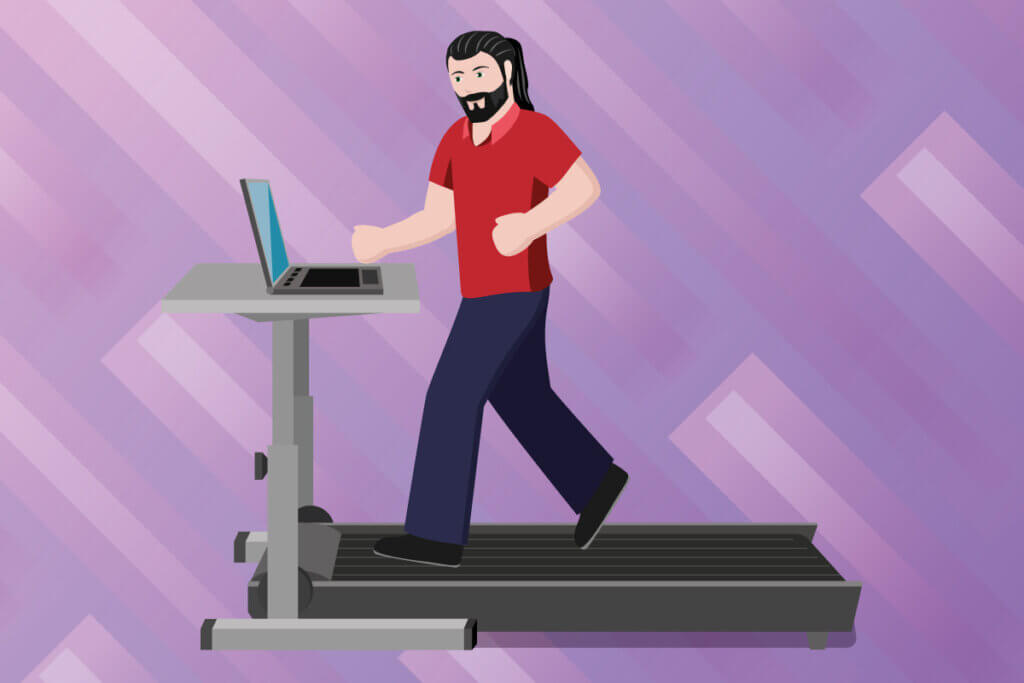
On the one hand, there are treadmills where the handrail is replaced by a robust, height-adjustable desk into which the control panel is inconspicuously integrated. On the other hand, there are treadmills without an upper part, so called under-desk treadmills, that can be pushed under a (height-adjustable) desk. Depending on the variant, users may have to buy a desk or a treadmill in combination with a desk.
Since this variant is mainly intended for training parallel to office work, the maximum speed is limited to 6 mph (10 km/h), which is quite sufficient for a casual running workout. A desk treadmill is therefore worthwhile above all for all those who work a lot from home and need some exercise in between.
Pet-friendly
The products on the treadmill market are not only reserved for humans, but are also designed for four-legged friends, especially dogs and cats. Special underwater versions, for example, help dogs to rehabilitate or overweight cats to get more exercise.
The decisive factor is the training goal
Quality has its price. The differences between a cheap and an expensive device are noticeable, among other things, in their performance, their noise level and also their durability. However, price says nothing about suitability for specific user groups. When deciding on a treadmill, there are a number of criteria to consider in order to purchase the right model for individual needs that will also lead to the desired training success. In addition to factors such as the available space and one’s own posture, it is above all the training goal that determines the type of treadmill that is right for you. Walkers at a leisurely pace have different requirements than ambitious runners with intensive training units. The following aspects refer primarily to electric treadmills, as the options for mechanical models are severely limited.
Stability is quality: the construction
The frame construction is a characteristic quality feature, as it determines factors such as the stability and volume of the treadmill. The treadmill’s own weight should be at least 176 lb (80kg) to ensure sufficient stability. Since vibrations occur with every step, a solid construction is necessary to absorb the vibration and provide a comfortable, safe running feeling. The running deck is subjected to the most stress. The thicker this component is, the longer the life of the appliance. Inferior material quality leads to cracks and dents over time. A treadmill belt with a thickness of at least 3mm is recommended. The same applies to the rollers: the larger their diameter, the smoother the belt and the longer its life. A stable frame also guarantees that nothing happens to the sensitive electronics.
Space and safety: about size
The treadmill should offer enough space so that users can move freely on it. The larger the runner and the faster the pace, the larger the running surface should be. While a width of 18 inches (45cm) and a length of 47 inches (120cm) is sufficient for leisurely runners. Fast athletes are better off with a surface of at least 20 x 55 inches (50 x 140cm). For users taller than 5 feet 9 inches (175cm), a running surface of 20 x 59 inches (50 x 150cm) or more is better. Professional models even have a size of 40 x 80 inches (100 x 200cm). Only if the running surface is adapted to the stride length can users develop a natural running behavior. Shortened strides not only lead to an unnatural running technique, which in the worst case causes injuries, but are also extremely ineffective. On a long running surface (55″/140cm or more), even sprints are possible.
A larger belt also has the advantage of being more comfortable and, above all, safer. If the running surface is too narrow, runners have to concentrate hard to avoid stepping next to the belt — especially if they are running particularly fast. Even minor missteps could lead to a fall. However, size is always a question of space in one’s home as well as price; users generally have to invest more for larger treadmills.
A need for speed? The motor power
The power of the motor is also an important purchase criterion, as it is responsible for transporting the belt over the rollers. Thus, the power of the motor has a massive influence on the quality and also the speed of the running training. The power is given in two different values: the peak power and the continuous power. Peak power is the speed that a motor can achieve for a short period of time as its maximum speed. Continuous power, on the other hand, is the power that a motor can deliver continuously as speed during the complete training period under the load of the maximum user weight. In the end, the value of the continuous power is decisive, as it gives a better picture of the actual motor power.
The majority of treadmills have an output of two horsepower (hp), which allows maximum speeds of between 7.5 and 10 mph (12 and 16 km/h). For walking or slow jogging, maximum speeds of 5 mph (8 km/h) with a motor power of 1.25 hp are quite sufficient. Faster runners should make sure that at least 12.5 mph (20 km/h) are achievable with a power of three hp. It should be taken into account that heavier runners may not be able to reach these speeds, as the motor power always depends on the load. As a general rule, the more intensive the use, the more powerful the motor should be. A strong motor usually runs more quietly or with less vibration, more evenly, and longer. The digital drive motor was invented for constant running performance, but it comes at a slightly higher price.
During operation, treadmills produce motor noise. In general, it can be assumed that the noise level is significantly lower on high-quality machines because they are more solid and stable. The noise level during running is measured in decibels. When walking, i.e. at a speed of about 2.5 mph (4 km/h), most treadmills are pretty quiet. That changes when running, or more precisely at speeds between 5 to 6 mph (8 to 10 km/h): here the noise level is higher than with other devices such as a cross trainer or exercise bike. If the noise level is to high either to yourself or your neighbor, it is helpful to place a carpet or floor mat under the machine to muffle the motor and exercise noise.
Easy on the joints: the cushioning
The surface has an influence on running comfort that should not be underestimated. While hard asphalt floors can be hard on the joints in the long run, running on forest floors is pleasantly springy. To protect joints, ligaments, and tendons, treadmills are equipped with a cushioning system. Rubber buffers on the running surface absorb the shock and effectively cushion each step. High-quality running surfaces are equipped with an 8-zone cushioning system that ensures particularly comfortable running.
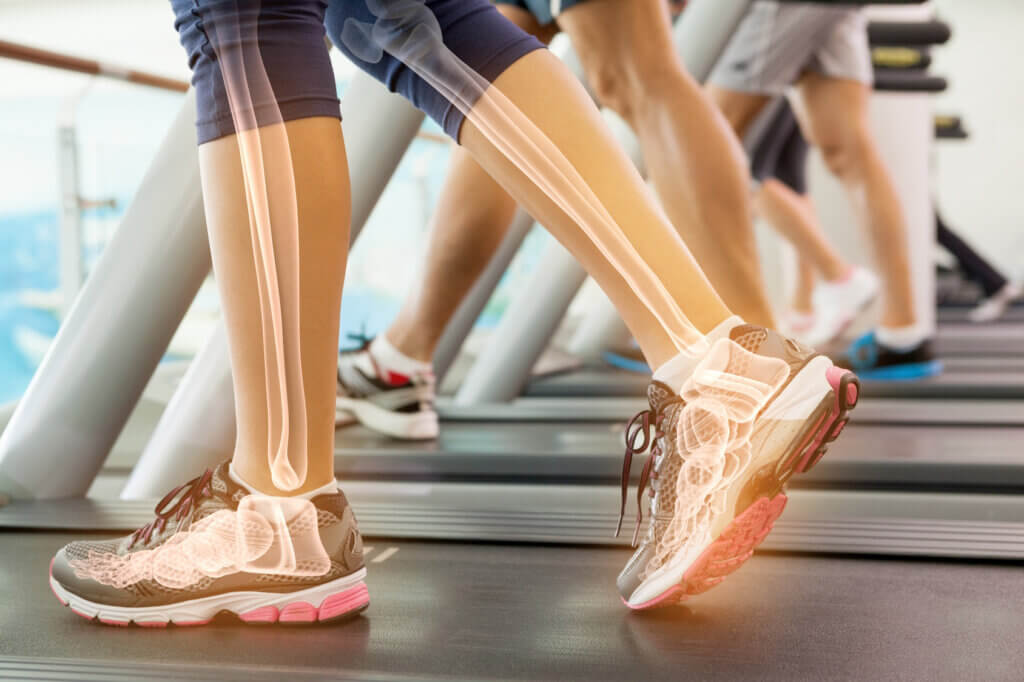
On some machines, the degree of cushioning is even adjustable, which is recommended. If the cushioning is too soft, the tendons, such as the Achilles tendons, would be overly stressed or fatigued, whereas if the cushioning is too hard, it would damage the joints and lead to foot, knee, vertebrae, and hip problems. Good cushioning also helps to reduce noise when running.
Running without a care in the world: safety
At first, it can be difficult to find a secure grip on the treadmill. Long handrails give users a sense of security by providing stability. Treads on the sides also make it possible to jump to the side and turn off the machine in an emergency. Non-slip materials such as aluminium are also recommended. Equally important is an emergency stop function, for example in the form of a button or a safety clip that can be attached with a rip cord. The rip cord functions as a magnetic switch that is attached to the body or clothing by means of a cord. If users press the button or pull the cord, for example due to a fall, the treadmill stops immediately.
Everything under control: the operating mode
On the display, users can monitor their body-related data such as heart rate or calories burned. In addition, they can see the speed and the steepness of the incline, but also adjust settings. Especially for beginners and seniors, it is important that the treadmill is easy to operate and doesn’t have too many “bells and whistles”. The display should be clearly laid out, i.e. letters and numbers should contrast well with the background so that the information on it can be read while running or in poor lighting conditions.
It should also have few clearly marked buttons so that the device is easy to operate. User-friendliness includes, for example, direct selection buttons or large plus and minus buttons with which speed and incline can be adjusted without getting out of the running rhythm. A quickstart button is also useful to start the training quickly and easily. Another practical feature is the ability to save user data. A touchscreen, on the other hand, often proves to be impractical, as it is difficult to operate the display with sweaty fingers during a fast run.
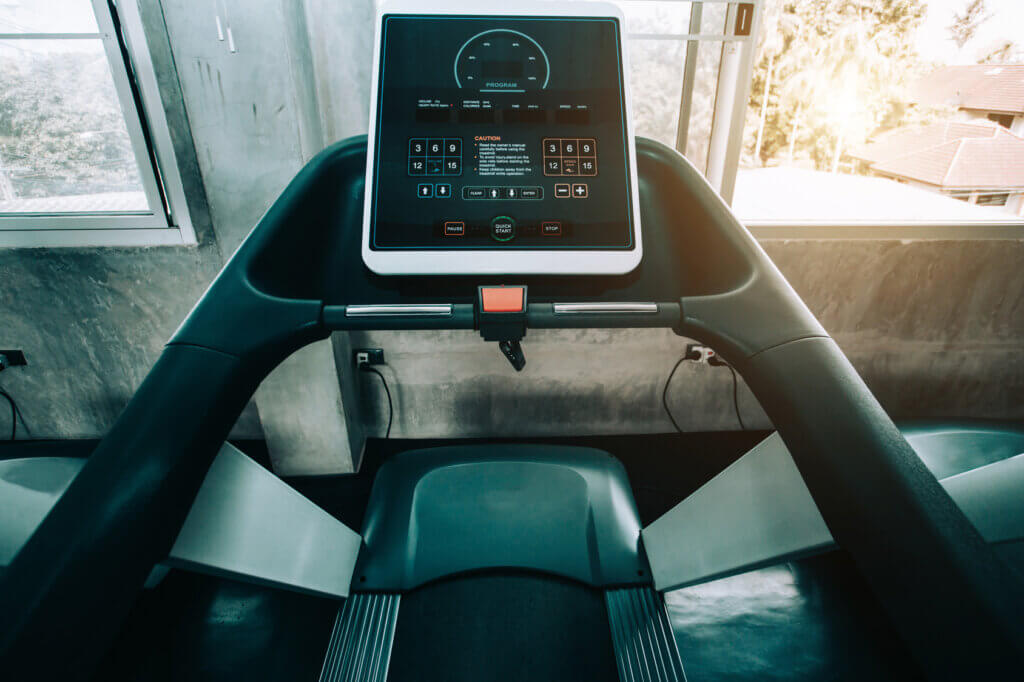
Through ups and downs: the incline angle
Some treadmills allow you to adjust the incline angle at the touch of a button to simulate uphill running. This not only adds new stimuli to the workout, but also strengthens other muscle groups. It is particularly practical if the angle can be adjusted while running so that the user doesn’t have to interrupt the workout. The angle of inclination is up to 15%. Settings in 1 to 2% increments are common. A continuous incline of 1 to 3% even has a relieving effect on the joints without being strongly noticeable in terms of fitness. This minimal incline is roughly equivalent to the air resistance that would occur when running outdoors. For more intensive leg muscle training, an inclination of between 4 and 8% is advisable.
Always the right pace: heart rate measurement
To keep an eye on your heart rate while running and better adjust your training, it is advisable to measure or control your pulse. The measurement is done either via sensors on the handlebars or via a chest strap that can be linked to the training computer. The latter method is not only more accurate, but also more practical, as runners do not have to hold on permanently. Pulse sensors on the handles are worthwhile at best to check the pulse in between. However, as the pulse belt is usually only available separately, there is an additional cost.
The pulse control is used to adjust speed and inclination to the pulse. It is especially important when runners want to boost fat burning. At the same time, it protects the body from overload.
Personalized and varied: the programs
When it comes to programs, quantity is not necessarily quality. The choice of programs depends on what the training should focus on. That’s why it’s important to think in advance about which training programs should be included. Depending on the equipment and price, treadmills with a selection of up to 50 programs offer multifaceted ways to have fun when running. Typical applications include the following:
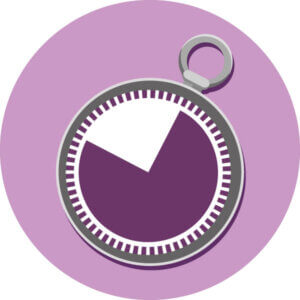
HIIT
High Intensity Interval Training consists of short training intervals in which the pulse is pushed up. The training method consists of alternating high-intensity intervals with slower recovery phases, which boosts fat burning. In addition to the speed, the incline can also vary. The method is mainly used to improve fitness and burn calories.
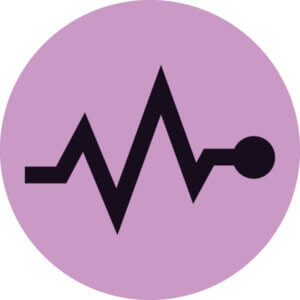
Pulse training
Pulse-controlled training is particularly useful for therapeutic purposes and for burning fat. Measuring the heart rate is a reliable indicator of the body’s workload. With the help of these programs, runners train specifically in the defined pulse range. During training, the treadmill automatically adjusts the intensity of the workout to the heart rate, i.e. it changes the incline or the pace.

Cardio training
During cardiovascular training, the heart rate should ideally be constantly between 75 and 85% of the maximum pulse. The training program uses the data to calculate a speed or incline that achieves exactly this training effect.
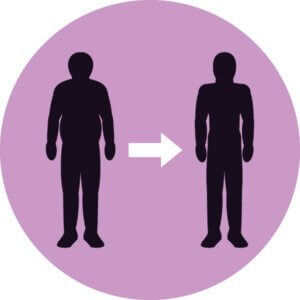
Fat burning
Fat burning programs last between 25 and 60 minutes. The motto is ‘the longer the better’, as it takes time for the body to start burning fat reserves. The pace should be just fast enough for runners to easily last the allotted time. As a rule, 60 to 70% of the maximum pulse is used here.
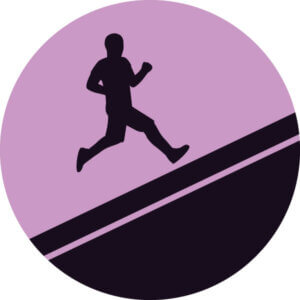
Uphill running
Runs with varying inclinations simulate the alternation of mountains and plains in nature. Uphill running not only strengthens the calf muscles, but also stimulates the cardiovascular system and causes the pulse rate to shoot up again and again. This makes the training particularly varied.
At least one interval and one heart rate program is recommended. Modern treadmills simulate races or routes by connecting to tablets and smartphones via Bluetooth, turning treadmill training into an interactive experience. Users can therefore watch a track on the screen to drive their motivation. Thanks to training software and apps, users can run virtual courses all over the world, from Central Park to the Gobi Desert. In some cases, it is also possible to compete with friends. Some treadmills even allow users to create training programs according to their own needs, i.e. to specifically enter distance, speed, and calorie burn, or to set an upper limit in the form of the individual pulse rate. This option is particularly useful for professionals.
Tips for maximum performance
Many runners are initially motivated to start training, but quickly loose their ambitions. To prevent this effect and optimize your training, we have put together some tips for long-lasting, effective training:
- Exercise at fixed times to develop a habit.
- Provide mental activity during training, for example through music, audio books, or films, to pass the time without getting bored.
- Sign up for running events to increase your motivation and have a concrete goal in mind.
- Since the muscles are constantly adapting to the strain of exercise, it doesn’t make sense to always choose the same program. In this case, the training effect and calorie consumption would be lower. For high-performance training, the body must always be confronted with new adaptation processes, i.e. variations in speed, distance, and incline. Interval training is a good option.
- As a rule of thumb: beginners should train no more than three times a week and no longer than 40 minutes.
- Although beginners hope for a faster development of performance through intensive training, this should be characterized by a slower pace with smaller inclines, especially at the beginning. Increase the training duration, frequency, and intensity in small steps to build a solid base fitness and avoid injuries.
- To avoid putting too much strain on the calves and Achilles tendons, it is important not to start running straight away, but to have a warm-up phase first. It is sufficient to walk for five to ten minutes at a unhurried pace (about 3 mph or 5 km/h) before starting the training session. At the end of the session, you also need a five-minute cool-down phase to loosen up and calm your heart rate. Loosening up and stretching exercises are recommended afterwards.
- The body needs rest periods of at least one day between training sessions to adapt to the load and become more resilient.
Exercises for more variety and efficiency
With one or two exercise tips, the rather monotonous running training becomes more varied in the long run. The bonus: fitness exercises burn additional calories. These include, for example, lunges, which can easily be done on the treadmill at 3 mph. The side step, which strengthens the calf and thigh, is done at a speed of between 3 to 4 mph (5 to 7 km/h), with the knees slightly bent, walking sideways on the treadmill and changing sides in between. A variation for the glutes is the side squat, where the knees are bent a little more at a slower pace.
Correct running technique
Correct running technique is not only more efficient, it is also easier on your joints. The following tips and rules of thumb apply here:
- Only hold on to the grips when you need security, for example in case of a training interruption.
- Take lots of short steps, as these are less stressful on your joints.
- Roll your feet to make the best use of your foot muscles in terms of cushioning.
- Place your feet on the ground closely in front of your body’s center of gravity to take the strain off your knee joints.
- Keep your shoulders relaxed as you run, while keeping your upper body upright and your gaze straight ahead to avoid tension in your neck.
- Angle your elbows at an angle slightly greater than 90 degrees and move your arms parallel to the direction of running. Ideally, the arms will follow an opposite pendulum motion, with the palms of the hands moving up to the pockets of your shorts as you move backwards.
- Try to bounce and rotate as little as possible when running.
- Keep your hands loosely closed and your wrists straight.
- Stay in the middle of the treadmill as it is safest there.
The different running speeds
There are three basic running speeds. Walking, the slowest pace (3 to 4 mph/5 to 6 km/h), involves runners holding on to the handrails and taking long strides to strengthen the leg and glute muscles. Power walking is held at a medium pace (4.5 to 5.5 mph/7 to 9 km/h). Here, runners actively lift the tops of their feet and knees, and roll over the whole foot. The arms swing past the body with the elbows bent. Running or jogging is done at a fast pace (from 6 mph/10 km/h) and with smaller steps. There is a so-called flying phase during which no leg is on the ground.
Training according to pulse: maximum heart rate
If you want to train according to your pulse, you need to know your maximum heart rate. A rule of thumb many use is 220 beats per minute minus your age. Exercisers achieve different results depending on their heart rate. While they are more likely to improve their general health with light endurance training, they improve their performance with maximum heart rate. To work on basic endurance, beginners should keep training sessions at a moderate pace with a pulse in the range of about 50 to 70% of maximum heart rate. Moderate training, in the range of 70 to 80%, is primarily for increasing endurance. More intense workouts for maximum performance gains are in the 80 to 90% range.
Images 1-3: © FinalCheck | Image 4: © WavebreakmediaMicro / stock.adobe.com | Image 5: © nikomsolftwaer / stock.adobe.com | Images 6-10: © FinalCheck

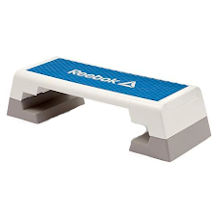
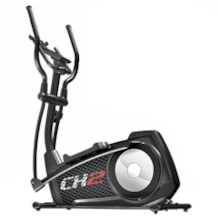
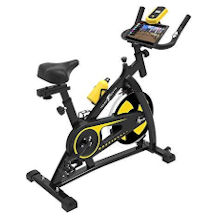
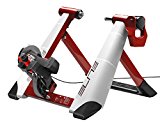
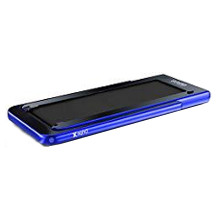
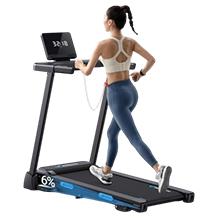
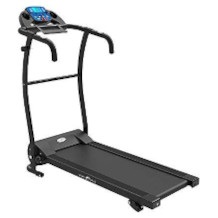
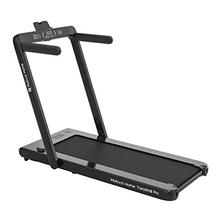
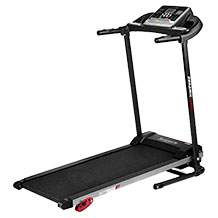
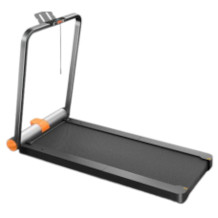
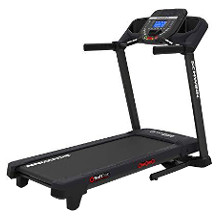
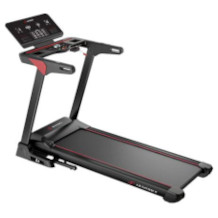

 398 reviews
398 reviews

